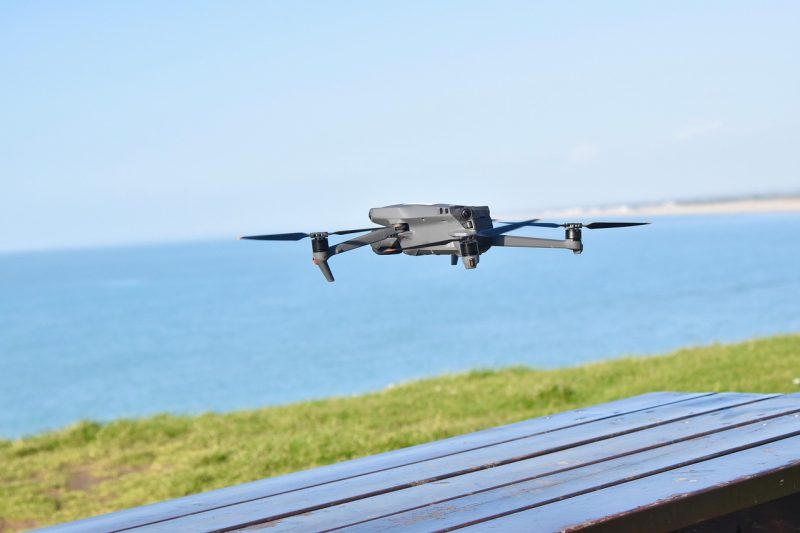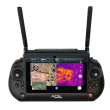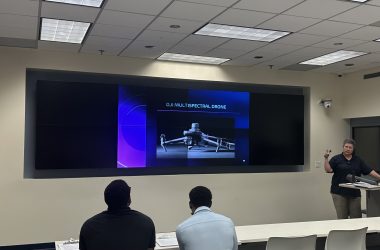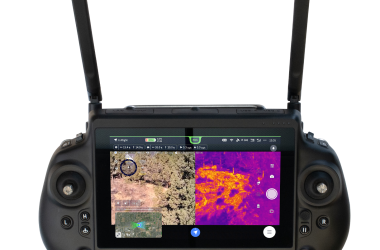Much is being written about the FAA’s recent BVLOS Notice of Proposed Rule-making (NPRM) which would allow drone flights beyond visual line of sight without the cumbersome waiver process that is in place today. Yet very little has been mentioned in news reports of the changes proposed in that same NPRM to Part 107. With a short 60-day comment period, especially short given the NPRM’s 731-page length, it’s important for Part 107 pilots to know what those proposed changes are in case they want to comment. Comments supporting the proposed rule are as important to the FAA as comments in opposition, so it’s important to make your voices heard.
Proposed Changes to Part 107
107.1 – Applicability
The NPRM proposes to make some clarifying amendments to the applicability section, clarifying operations that are not covered by Part 107. To that end, the proposal:
- Removes a reference to Section 333 Exemptions because they have been replaced by 49 USC 44807 in the 2018 FAA Reauthorization Act. The preamble notes that the last 333 Exemption would have expired in 2020 so the reference is no longer necessary.
- Clarifies that all Part 91 operations are excluded from Part 107, whether or not the drone has an airworthiness certificate.
- Makes explicit that Part 107 would not apply to BVLOS operations (BVLOS waivers to Part 107 would no longer be available). All BVLOS operations would have to be undertaken under the new proposed Part 108.
- Excludes from Part 107 all flights carrying packages for compensation or hire. While only very limited operations have been allowed under Part 107 – mostly within visual line of sight – the FAA believes “the risk structure of part 107, which does not require any type of UAS design assurance, nor any form of operator qualifications, does not align with the risks posed with large commercial ventures.” Therefore, it proposes to only allow operations that carry property for compensation or hire by drone in accordance with Part 108.
Flights under Section 44809, the limited recreational exception, would continue to be excepted from to Part 107.
107.8 – Aviation Safety Reporting Program
This proposed new section would align with the way the FAA handles Aviation Safety Reports to NASA for other certificated airmen. The agency would be prohibited from using these reports in any enforcement actions except for any information regarding accidents or criminal conduct which are excluded from the program. According to the preamble, “FAA and NASA have recognized the benefit of having accurate, candid, and timely reports of unsafe (or potentially unsafe) conditions in the [national airspace system], and this would create that same consistency within Part 107.” The FAA extended the ASRP program to UAS operators in 2022 Aviation Safety Reporting Program (ASRP) for UAS | Federal Aviation Administration but this proposed change would constitute an explicit regulatory basis for excluding ASRP information from enforcement actions.
107.10 Prohibition on Interference with a Remote Pilot in Command
This is sure to be a welcome proposal for drone pilots who have been harassed or assaulted while flying – or who fear that happening to them. This new section would prohibit assaulting, threatening, intimidating or interfering with a remote pilot in command or visual observer. It’s not clear why the person manipulating the controls who is not the pilot in command was not included in this prohibition and operators may want to comment on that.
According to the FAA, this section is necessary to protect the safety of the airspace: “Bad actors who interfere with UAS operations may endanger public safety and persons or property – both in the air and on the ground which is anathema to the FAA’s obligation to ensure the safe and efficient use” of the airspace. Again, this change would align with the prohibition on interfering with manned aircraft crews and the proposed Part 108.
107.41 Controlled Airspace At or Below 400 Feet
The NPRM proposes to allow operations in controlled airspace (Class B, C, D and the surface area of E designated for an airport) without FAA authorization, unless the FAA specifically designates the area as requiring authorization. This would align Part 107 operations in controlled airspace with those proposed under Part 108.
Flights in controlled airspace would have to meet the following conditions:
(1) The unmanned aircraft is operated 400 feet above ground level or below;
(2) The unmanned aircraft is operated in compliance with Part 107.
Areas in controlled airspace requiring FAA authorization prior to operation would be specified in an FAA Air Traffic handbook which would be incorporated by reference into the Part 107 regulations. According to the preamble, the FAA would publish any proposed changes to areas requiring FAA authorization in the Federal Register beforehand, unless the change required immediate implementation.
The NPRM also adds a section prohibiting operations in Security Sensitive Areas, without authorization. This would appear to clarify to Part 107 operators the existing prohibition on flights in these areas in Part 99, Security Control of Air Traffic.
107.205 List of Regulations Subject to Waiver
These are proposed technical amendments to conform with changes discussed above. For example, no waiver to the visual line of sight requirement in Section 107.31 would be allowed since all operations BVLOS would have to be under the proposed Part 108. Any relief sought from the rules, the FAA states in the preamble, should be to the proposed Part 108 requirements and not Part 107.
The FAA is also proposing to delete the airspace waiver provision since it is no longer processing Part 107 airspace waivers. The FAA provides airspace authorizations through either LAANCC or the FAADroneZone and the FAA believes the waiver provision is unnecessary and could be confusing to Part 107 certificate holders.
Part 48 Change Regarding Remote ID Module Transferability
In what is sure to be a welcome change for Part 107 pilots, the FAA is proposing to allow the serial number of remote ID modules to be listed on more than one aircraft registration, so long as the aircraft are registered to the same individual or entity. This would allow the modules to be shared among drones. Today, under Part 107, remote ID modules cannot be shared among registered drones owned by the same individual or entity without the remote ID serial number being deleted from one drone and reregistered with another, an obviously cumbersome and time-consuming process. According to the FAA, “this change will eliminate this burden, while still ensuring that the remote identification broadcast information can be associated with the registered owner or entity.”
How to Comment on the BVLOS NPRM
The FAA’s NPRM and commenting instruction can be found here. The comment period ends October 6, 2025. Comments must identify the docket number of the NPRM : FAA-2025-1908 and can be sent in any of the following ways:
Fax: Fax comments to Docket Operations at (202) 493-2251.
Federal eRulemaking Portal: Go to https://www.regulations.gov/ and follow the online instructions for sending your comments electronically.
Mail: Send comments to Docket Operations, M-30; U.S. Department of Transportation (DOT), 1200 New Jersey Avenue SE, Room W12-140, West Building Ground Floor, Washington, DC 20590-0001.
Hand Delivery or Courier: Take comments to Docket Operations in Room W12-140 of the West Building Ground Floor at 1200 New Jersey Avenue SE, Washington, DC, between 9 a.m. and 5 p.m., Monday through Friday, except Federal holidays.








